7 Best Back Pain Exercises Physical Therapists Actually Recommend
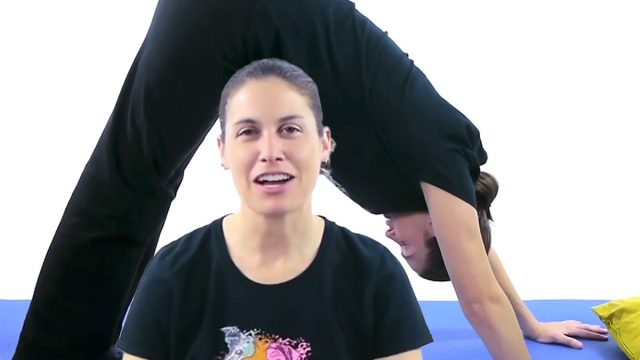
That nagging back pain from sitting too long or lifting something awkwardly doesn't have to ruin your day. Whether it's from hunching over your desk or an overenthusiastic workout, relief is possible with the right stretches and exercises.
Physical Therapist and Doctor of Physical Therapy Doctor Jo has helped millions find relief from common aches and pains through her practical approach to physical therapy. With over 2 million YouTube subscribers, Dr. Jo specializes in creating easy-to-follow exercise routines you can do at home. Follow along with these expert-approved stretches to help ease your back pain today.
Start with the Pelvic Tilt for Core Engagement
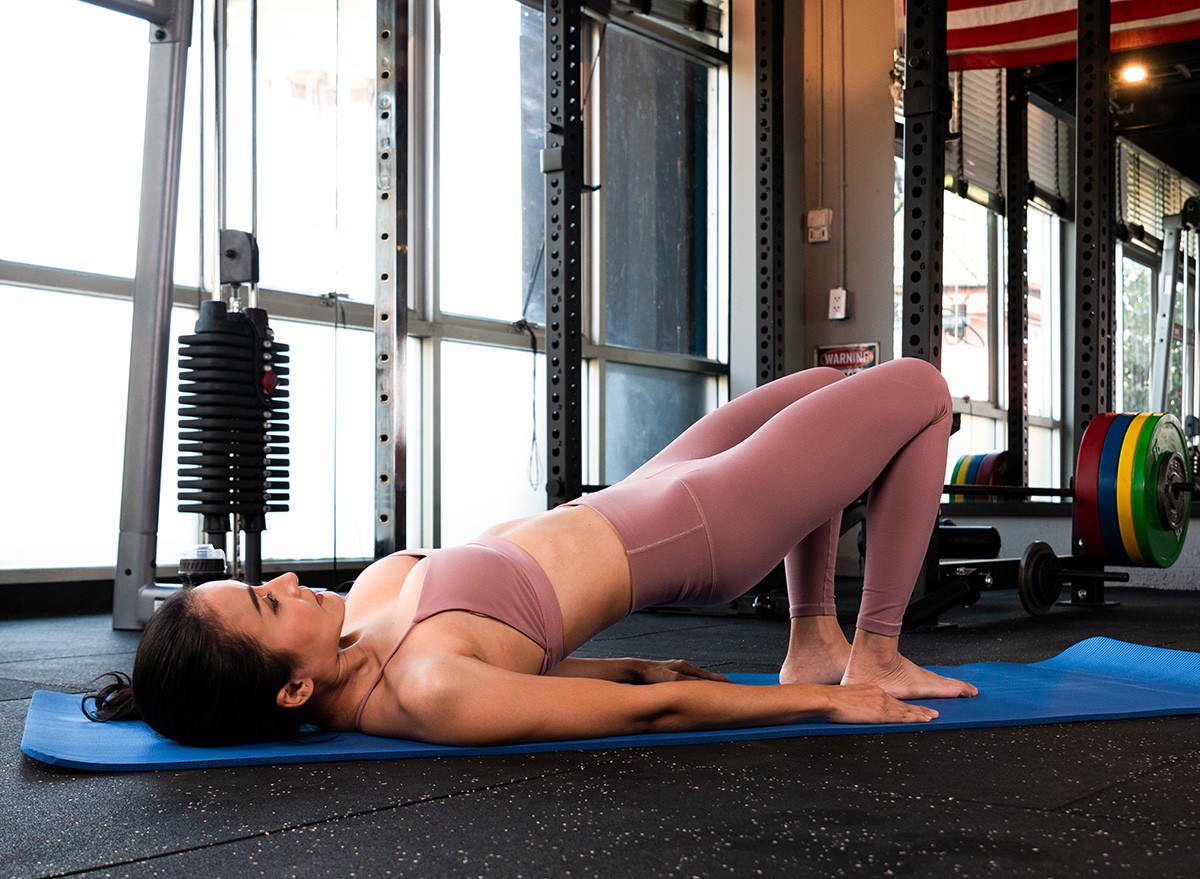
Begin by lying on your back with your knees bent. "The pelvic tilt is exactly what it sounds like—you're taking your pelvis and tilting it back," Dr. Jo explains in her post. Place your hands in the curve of your lower back and press down, trying to flatten your back against your hands. Hold this position for 3-5 seconds before releasing. Dr. Jo recommends starting with 10 repetitions to activate those core muscles.
Bridge Your Way to Better Back Health
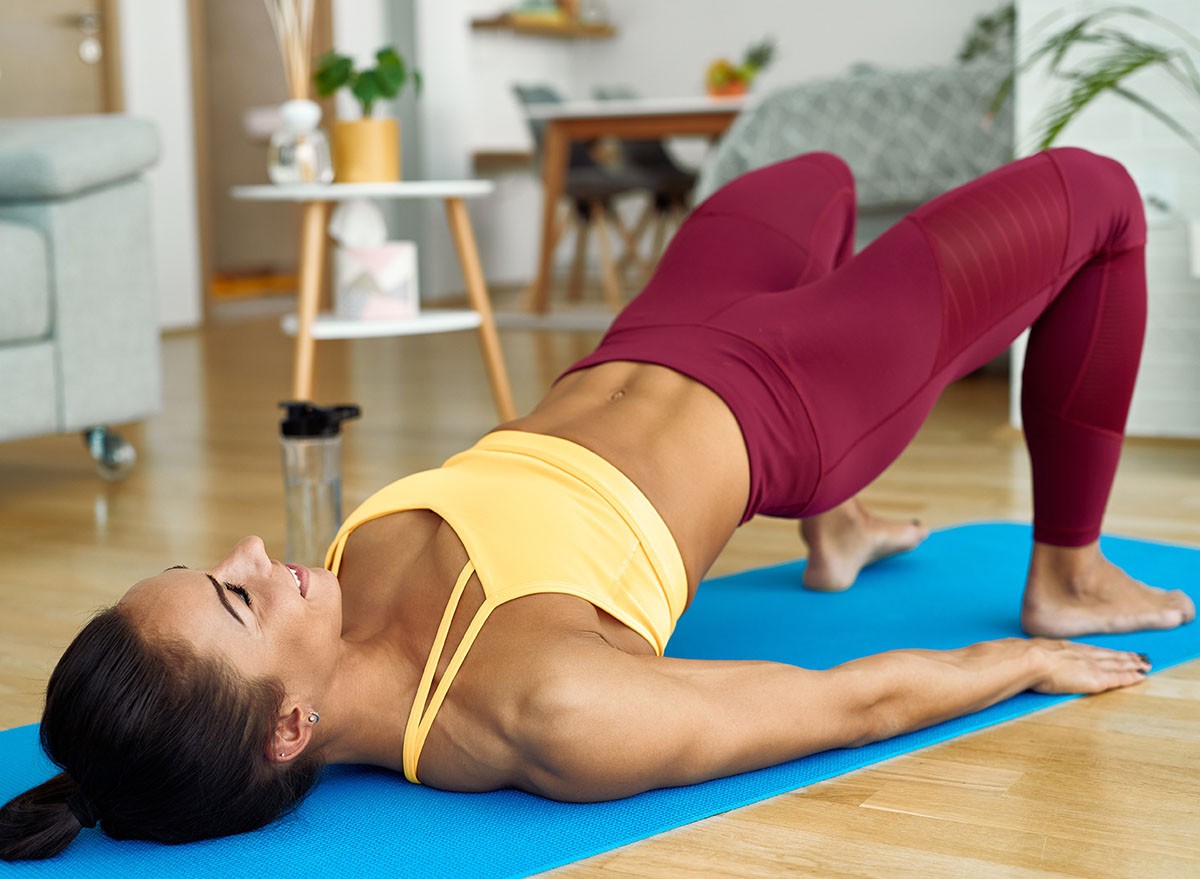
After mastering the pelvic tilt, move on to bridge exercises. "Lift your hips up until you form a straight line with your body," Dr. Jo instructs. The key is controlled movement—lower yourself back down one vertebra at a time rather than dropping quickly. Start with 10 bridges, focusing on smooth, deliberate movements that help loosen tight muscles and promote healing.
Single Knee-to-Chest Stretch for Targeted Relief
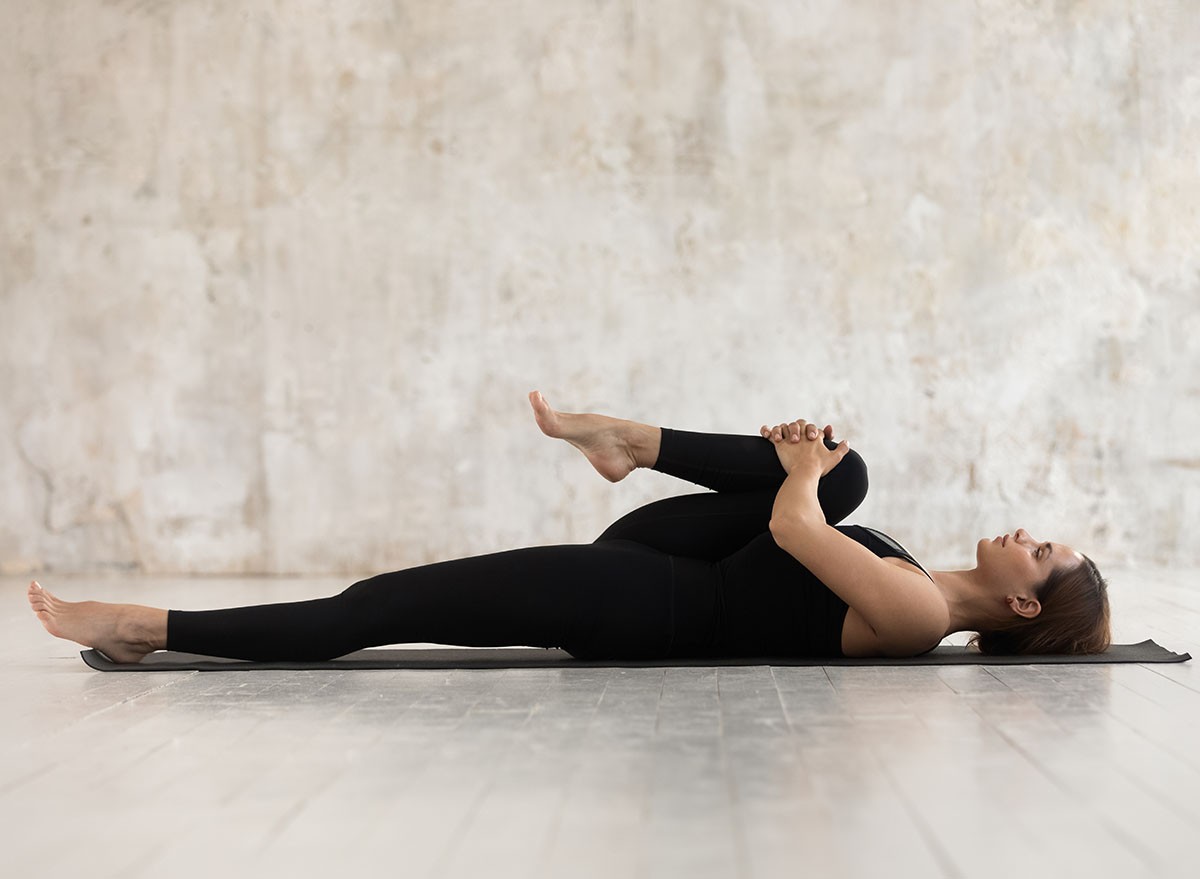
For this stretch, Dr. Jo recommends grabbing under your knee rather than over it to protect your joints. "Pull your knee toward your chest as far as comfortable," she advises. Hold this position for 30 seconds, then switch sides. Complete three sets on each leg, allowing yourself to feel a gentle stretch in your lower back.
Double Knee-to-Chest for Full Back Release
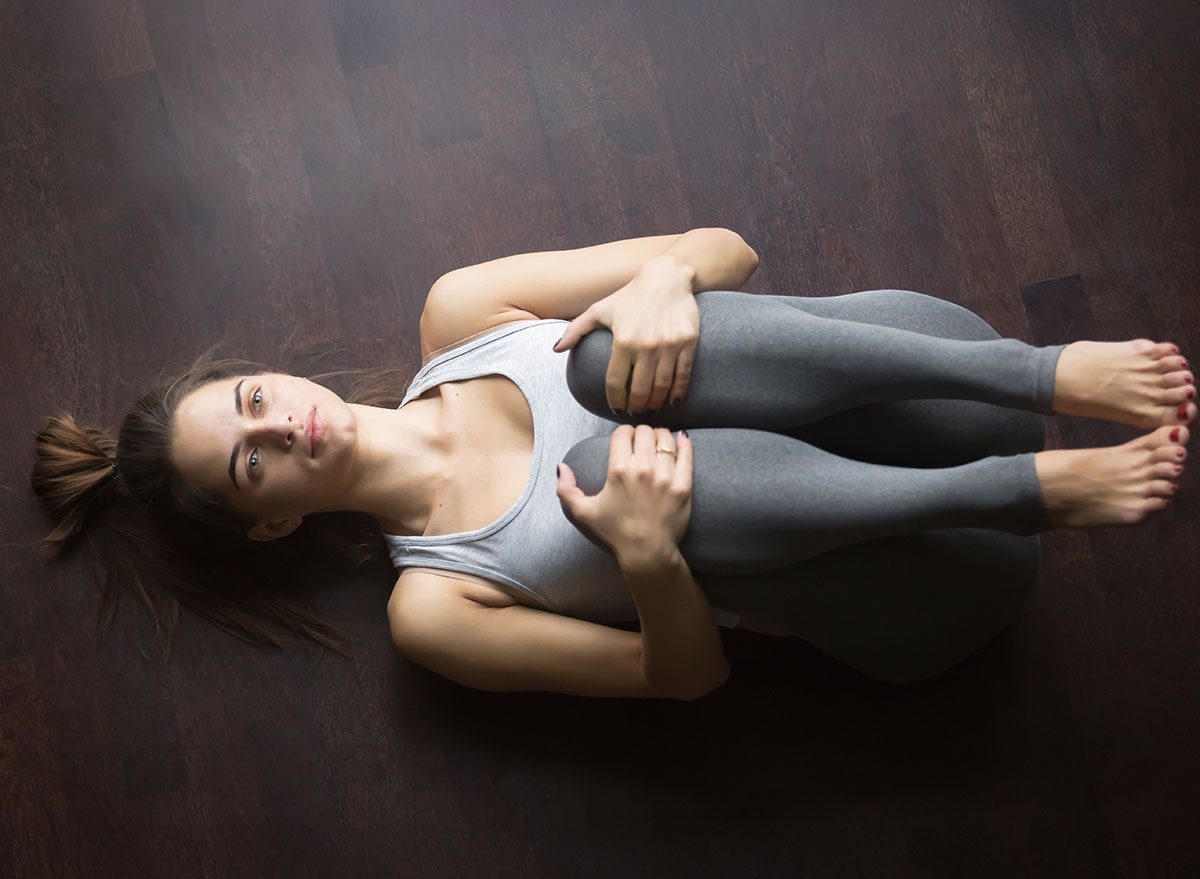
Take the stretch further by bringing both knees to your chest simultaneously. "You should feel this stretch right underneath your lower back area," notes Dr. Jo. Hold for 30 seconds and repeat three times. Remember to grab underneath your knees if you have any knee sensitivity.
RELATED: 12-3-30 Walking Method: 20 Proven Tips to Lose Weight Faster
Trunk Rotations for Spinal Mobility
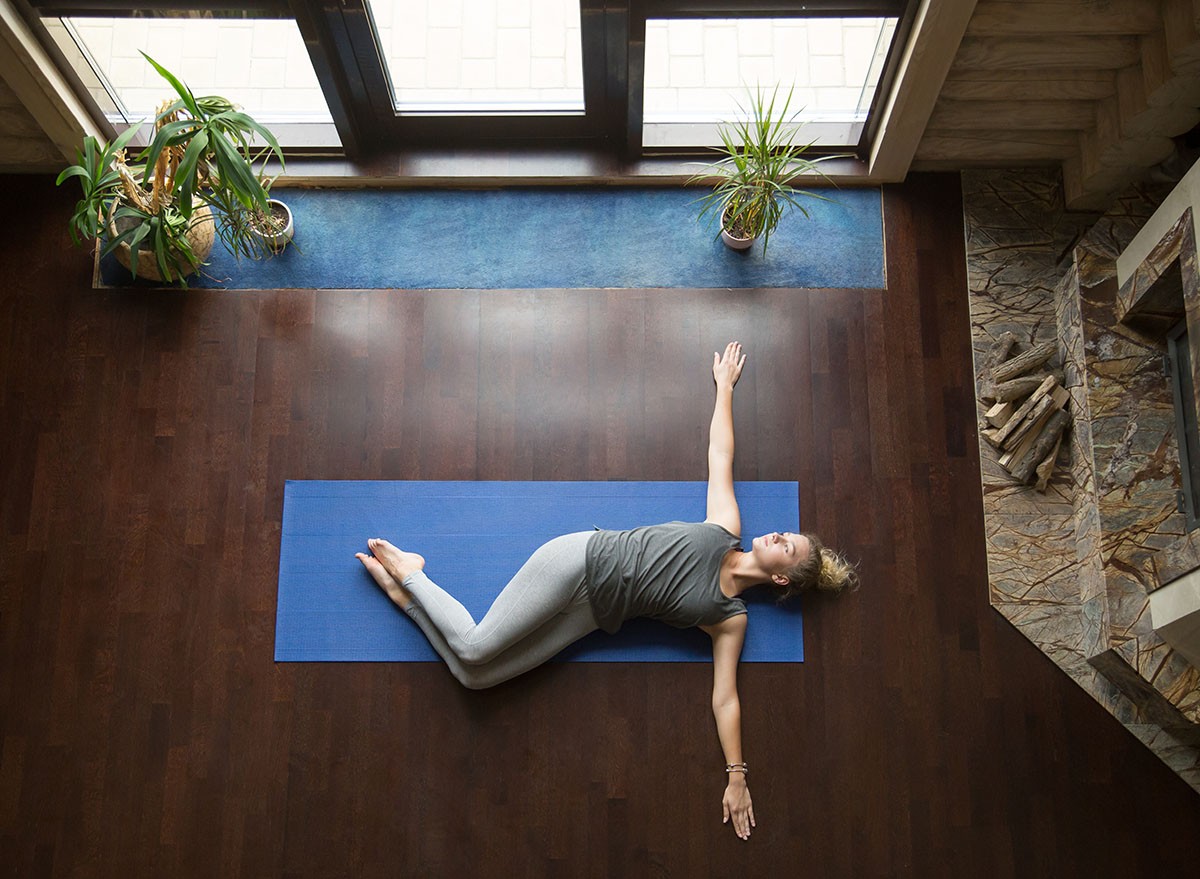
Keep both legs together while lying on your back and rotate them to one side. Dr. Jo emphasizes keeping your upper body grounded while rotating: "Move only as far as comfortable, not to the point of pain." Hold each rotation for 3-5 seconds and complete five repetitions on each side.
Prayer Stretch for Full Back Extension
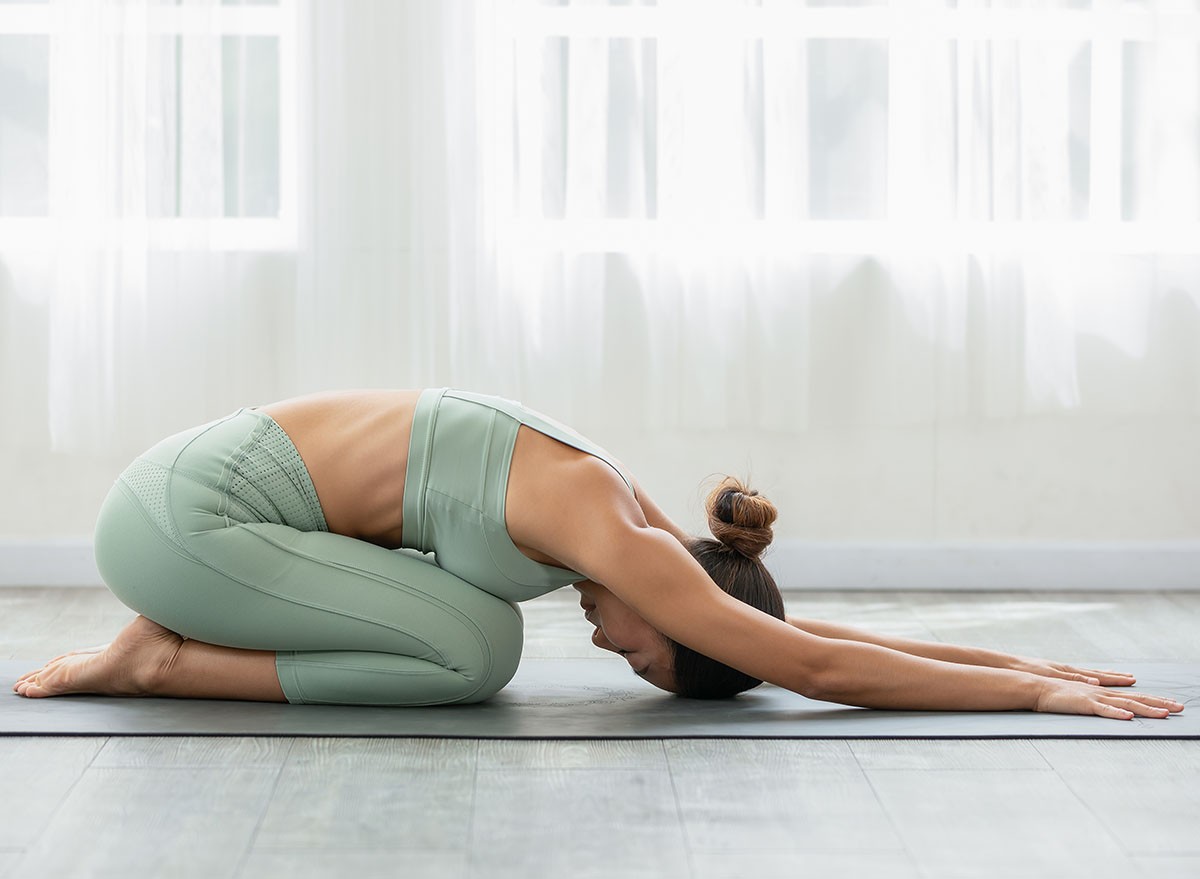
Moving to your hands and knees, extend your arms forward into what Dr. Jo calls the prayer stretch. Reach as far forward as comfortable while lowering your head between your arms. Hold this position for 30 seconds, feeling the stretch along your entire back.
Finish with Yoga-Inspired Flow
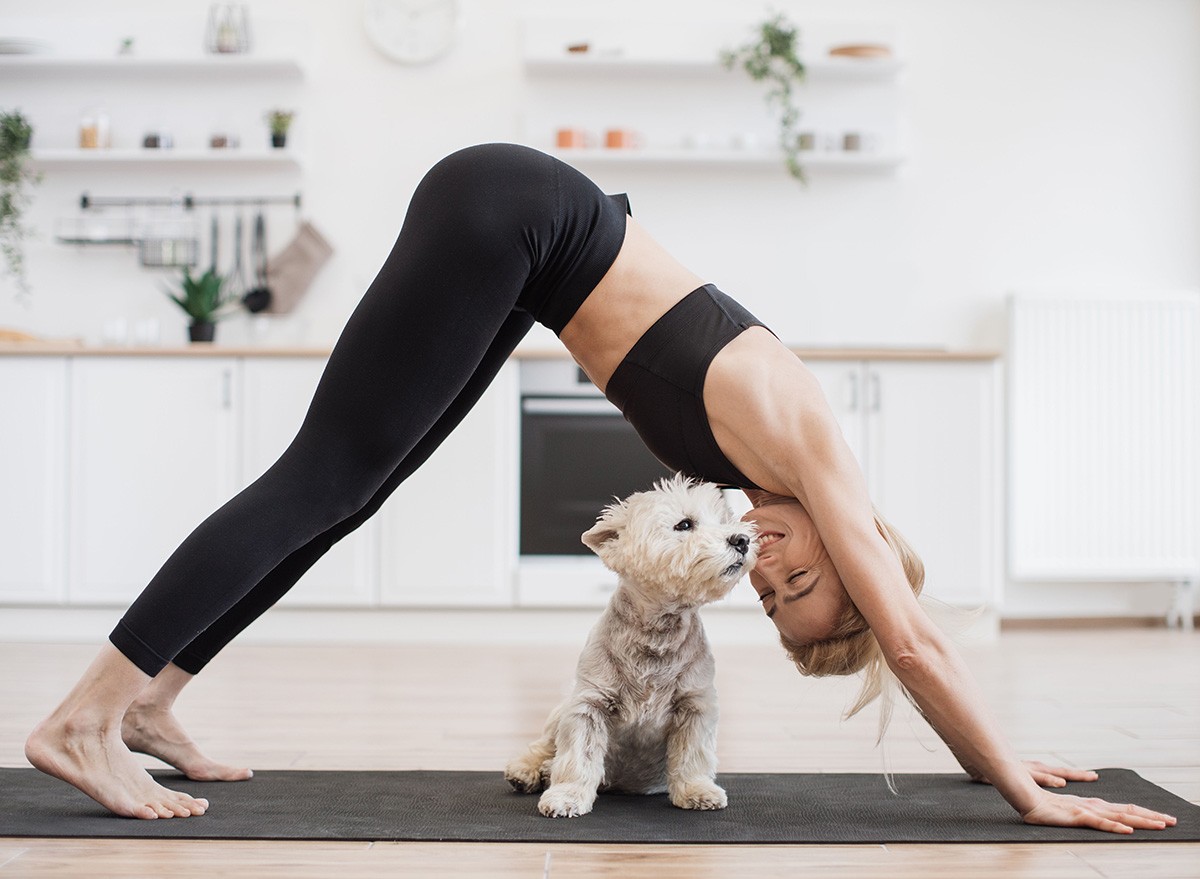
End your routine with a flowing movement between plank, upward dog, and downward dog positions. "Hold each position for 3-5 seconds," Dr. Jo instructs. This dynamic stretch combination helps improve flexibility and strength throughout your back. Repeat the sequence 3-5 times. And if you enjoyed this article, don't miss these 3 Simple Stretches Made This Coach More Flexible in 2 Weeks.




